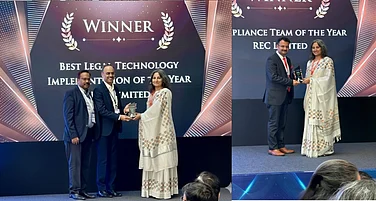NASA and ISRO’s joint NISAR (NASA-ISRO Synthetic Aperture Radar) Earth observation satellite has lifted off in a landmark mission, and Kolkata-born scientist Subhradip Ghosh played a pivotal role in its success. NISAR will measure Earth’s changing ecosystems and dynamic surfaces – from melting ice sheets to vegetation changes – providing critical data on biomass, sea-level rise and natural hazards. Launched on July 30, 2025 from India’s Satish Dhawan Space Centre, NISAR carries advanced L- and S-band radars and represents the first-ever joint hardware collaboration between ISRO and NASA.
Landmark NASA-ISRO NISAR Earth-Observing Mission
The 3-stage Geosynchronous Satellite Launch Vehicle Mk II (GSLV Mk II) rocket – a 52-meter tall launch vehicle – carried the NISAR spacecraft into orbit. This state-of-the-art Earth-monitoring satellite is one of the most advanced ever developed, carrying dual payloads built by ISRO and NASA. Its sophisticated radar will map surface changes, cloud-penetrating to see through storms, and help monitor critical infrastructure worldwide. The mission will return data on ice sheet dynamics, deforestation, groundwater changes and more – a leap forward for global science and disaster preparedness.
Subhradip Ghosh’s Critical Propulsion Role
ISRO’s Systems Reliability Division at Sriharikota entrusted Subhradip Ghosh – an ISRO Scientist/Engineer with six years of experience – with the crucial liquid propulsion system of the NISAR launch vehicle. As the launch vehicle’s liquid-propulsion engineer, he oversaw the integration and handling of the rocket’s fuel system. Ghosh’s responsibilities included managing the rocket’s liquid propellants, ensuring exact fuel loading and monitoring, and running 24×7 monitoring of the fuel systems. His steady leadership in these critical phases helped power the NISAR mission into a successful lift-off.
Heritage Institute Celebrates Alumnus Achievement
An alumnus of Heritage Institute of Technology (HITK), Kolkata (B.Tech. 2013–17, Chemical Engineering), Subhradip Ghosh makes the entire Heritage family proud. He has been associated with more than 25 ISRO missions, including Chandrayaan-2 and 3, Aditya-L1, and recent SPADEX launches. His story is a testament to Indian talent and the strong educational foundation provided by HITK, fueling national pride in this historic mission.
Prof. Basab Chaudhuri, Principal of Heritage Institute of Technology, remarked, “We are incredibly proud of Subhradip. His success in the NISAR mission reflects the rigorous training and innovative spirit fostered at HITK. Subhradip’s achievement shows current students that hard work and a solid technical foundation at Heritage can launch even the most ambitious dreams.”
Pradip Agarwal, CEO of Heritage Group of Institutions, added, “This is a proud moment for India and our Heritage family. Our mission has always been to nurture excellence in science and engineering, and Subhradip’s role on this NASA-ISRO project exemplifies that vision. We congratulate him and all our alumni who are contributing on the world stage.”
Subhradip Ghosh himself expressed gratitude to his alma mater: “I owe my success to the strong foundation and values taught at Heritage Institute. The years I spent in HITK’s classrooms and labs prepared me to tackle challenges at ISRO. This accomplishment belongs not just to me but to every teacher, mentor and peer who encouraged my passion. I dedicate this success to the entire HITK and Indian scientific community.”
A Triumph for India and Beyond
As Union Minister Jitendra Singh aptly noted, this mission is "symbolic of India's transition from utility-based space programs to global scientific leadership". This achievement creates a powerful positive effect, inspiring the next generation of scientists and engineers within India and demonstrating the extraordinary possibilities that arise from dedication and quality education. It also strengthens India's international partnerships and enhances its global standing as a reliable, technologically advanced, and collaborative space power.


























